While overshadowed at times by the larger plantation economies of South Carolina, Georgia, and Virginia, North Carolina’s unique geography, demographic shifts, and legal peculiarities cultivated a slavery system deeply woven into its foundational character.
From the exploitation of the coastal plains to the forced labor of enslaved people in emerging urban centers like Wilmington and Raleigh, the state's wealth was built on bondage, and its lasting prosperity was mortared with the suffering of African-descended people.
North Carolina’s earliest colonial experiments, including the proprietary charter of the Carolina colony in 1663, were heavily influenced by settlers from Barbados and other Caribbean colonies, who brought with them the knowledge and brutality of the sugar plantation economy. These early white elites arrived with a deep familiarity with slave labor and quickly sought to reproduce similar economic conditions in the American South. Although the geography of North Carolina—particularly its swampy coastlines and less fertile uplands—delayed the emergence of large-scale plantations relative to neighboring colonies, slavery was adopted quickly and spread steadily through the region. Tobacco became a leading crop, but North Carolina’s diverse economy also relied heavily on naval stores, such as tar, pitch, and turpentine, and later cotton, all of which required enslaved labor for success.
The slave economy in North Carolina was characterized by both plantation and non-plantation models of labor exploitation. In the eastern parts of the state, large plantations dominated by tobacco and cotton relied on hundreds of enslaved people, with owners wielding near-totalitarian control over the lives of the enslaved. In contrast, the Piedmont and mountainous western regions, where the soil and climate made plantation farming less profitable, developed a system of smaller-scale slavery. Here, enslaved people were often hired out or worked in more intimate domestic arrangements, which nonetheless inflicted the psychological and physical horrors of chattel slavery. In both regions, slavery became essential to agricultural output, infrastructure building, industrial development, and the social hierarchy that positioned whiteness as inherently superior.
Beyond the physical labor extracted from enslaved Africans, North Carolina’s entire economy was entangled in what scholars term the slavery industrial complex. This network included banks, insurance companies, shipping firms, manufacturers, and textile mills—all of which profited either directly or indirectly from slavery. For example, North Carolina-based banks issued credit using enslaved people as collateral.
Insurance companies sold policies on enslaved lives, profiting from the death and suffering of Black people as a calculable financial risk. Shipping companies ferried enslaved individuals to ports like Wilmington, while local manufacturers used raw materials—cotton and turpentine, often produced by enslaved labor—to generate wealth. Southern textile mills benefited from the global cotton trade, a market rooted in plantation slavery, and towns like Fayetteville and Charlotte emerged as commercial hubs with financial and industrial systems deeply entangled in human bondage.
North Carolina's legislative bodies also worked to entrench slavery. The state passed a series of slave codes over the 18th and 19th centuries that gradually refined the mechanisms of control. Enslaved individuals were considered real property with no legal rights to their personhood. They were forbidden from learning to read or write, and any attempts to educate enslaved persons were punishable by law. Enslaved people could not testify against white individuals, were prohibited from assembling without a white overseer, and were often subjected to severe physical punishment without legal recourse. Even free Blacks—whose population grew in parts of the state—were subjected to oppressive laws, including curfews, movement restrictions, and prohibitions against owning firearms or participating in politics.
The system of slavery in North Carolina was also supported by religious institutions that often used biblical justification to rationalize bondage. Both Protestant and Catholic leaders preached doctrines that suggested the enslavement of Africans was divinely sanctioned, reinforcing the racial and social order in both rural and urban settings. However, within these same churches, enslaved people developed subversive spiritual traditions that blended African religious beliefs with Christian teachings, forming the early roots of the Black church tradition in North Carolina—a tradition that would later become pivotal in abolitionist and civil rights movements.
Slavery's reach also extended into North Carolina's education system and the academic institutions that emerged during and after the era of bondage. The University of North Carolina at Chapel Hill, founded in 1789, benefited from the institution of slavery both financially and culturally. Enslaved people built many of its early structures, served faculty and students, and supported the daily operations of the university. Donors to UNC often derived their wealth from plantations and enslaved labor, and the university's early curriculum promoted the racial ideologies that underpinned slavery. Even today, calls for restitution and acknowledgment have forced North Carolina’s institutions of higher education to reckon with their historical complicity.
In addition to physical labor and economic exploitation, North Carolina was also a site of profound human suffering and cultural disruption due to forced migrations. The domestic slave trade was particularly brutal in the state. Enslaved people were bought and sold in public markets in cities like Wilmington, New Bern, and Raleigh. Families were routinely separated, with children sold to distant plantations and spouses permanently divided. The internal slave trade saw North Carolina become a critical feeder state, with enslaved individuals often sold and transported southward into Georgia, Alabama, Mississippi, and Louisiana as the Deep South economy expanded. These movements—many of them documented in heartbreaking narratives and oral histories—reflect not only the commodification of human life but also the psychological warfare waged against Black families.
Parallel to the migration of African Americans under slavery was the forced displacement of Indigenous populations under U.S. policies like the Indian Removal Act of 1830. While often geographically associated with states farther west, the Trail of Tears had deep implications for North Carolina’s Cherokee population. In western North Carolina, thousands of Cherokee people were forcibly removed from their ancestral lands, marched westward to present-day Oklahoma in horrific conditions. This removal opened more land for white settlement and the expansion of slavery, creating a direct link between settler colonialism and chattel slavery. In some cases, Cherokees themselves were slaveholders, complicating the narrative but further entrenching the centrality of African bondage in the American expansionist project. Enslaved Africans and Indigenous people alike were viewed as obstacles to white economic progress, and their suffering became a shared legacy of dispossession.
Enslaved North Carolinians did not accept their condition passively. Resistance took many forms—subtle, spiritual, and overt. Enslaved people broke tools, feigned illness, slowed labor, preserved African cultural traditions, and occasionally rebelled. Among the most well-known resistance events was the 1830 attempted rebellion in Wilmington, inspired by the successful Haitian Revolution and by rumors of insurrection in other Southern states. Although the plot was uncovered before it could be executed, it sent waves of terror through white society and led to even stricter controls on Black behavior and communication. Enslaved women also led quiet revolutions, using knowledge of herbs to control reproduction or care for the wounded, while also serving as oral historians preserving family legacies through song and story.
After emancipation, the struggle for justice in North Carolina took new forms. The Freedmen’s Bureau, established in 1865 to aid formerly enslaved people, set up offices across the state, offering food, shelter, legal assistance, and education. Although underfunded and often under attack from white supremacist elements, the Bureau made critical gains in helping freedpeople transition to autonomy. Schools for Black children sprang up throughout the state—often built by the freedpeople themselves—signifying the beginning of an educational movement that would bear fruit in future generations. However, the backlash was swift and severe. The rise of the Ku Klux Klan in North Carolina in the late 1860s and the implementation of Black Codes and later Jim Crow laws ensured that the promises of Reconstruction would remain unfulfilled for decades.
Many North Carolinians of African descent emerged during the 19th and early 20th centuries as fearless abolitionists, educators, and civil rights laborers. Abraham Galloway, born enslaved in Smithville (modern-day Southport), escaped bondage and became a spy for the Union Army during the Civil War. He later helped organize Black voters and was elected to the state Senate, a symbol of post-emancipation Black political power. Harriet Jacobs, born in Edenton, authored the harrowing narrative "Incidents in the Life of a Slave Girl," which remains one of the most powerful testimonies of slavery’s brutality and the unique suffering of enslaved women. Both figures highlight the intellectual and activist contributions of North Carolina’s Black population to national movements for freedom.
As Reconstruction gave way to the Redemption period and the subsequent rise of Jim Crow in North Carolina, the social order sought by the Confederacy was gradually reinstated under different guises. The constitutional amendments that had promised freedom, citizenship, and voting rights to formerly enslaved people were systematically undermined by new legal mechanisms, including poll taxes, literacy tests, grandfather clauses, and gerrymandered districts. These measures did not emerge organically—they were designed and implemented with intentional precision to destroy the fragile scaffolding of Black autonomy constructed during the immediate post-slavery years.
The political rollback of Black rights in North Carolina was compounded by acts of racial terrorism. Wilmington, North Carolina, became the epicenter of a violent white supremacist insurrection in 1898 that marked one of the only successful coups in United States history. A democratically elected, interracial local government—made possible by Reconstruction—was overthrown by white mobs who burned Black-owned businesses, killed dozens of Black citizens, and drove out political opposition. This orchestrated campaign of violence was backed by newspaper propaganda, business leaders, and state officials. In the aftermath, white supremacy became law and culture, effectively ending meaningful Black political participation in the state for nearly a century.
Economic life for African Americans in North Carolina during this period was shaped by the exploitative sharecropping system, which replaced slavery in all but name. Black families leased land from white landlords and paid rent with a portion of their crops, but high-interest loans, unfair accounting, and poor prices ensured that most remained trapped in cycles of debt. In addition to sharecropping, convict leasing and chain gang labor became widespread throughout the state. The criminalization of Black life through vagrancy laws, loitering statutes, and other racially coded legal tools meant that thousands of African Americans were arrested and sentenced to hard labor for minor or fabricated infractions. Their labor was leased to private companies, railroads, and plantation owners, effectively reestablishing slavery under the guise of penal labor. North Carolina’s infrastructure—its roads, railways, and public buildings—owes much to this coerced labor.
Despite these oppressive conditions, Black North Carolinians continued to resist and organize. Schools, churches, and mutual aid societies became havens of empowerment and resistance. Institutions like Shaw University (founded in 1865), North Carolina A&T State University (1891), and Johnson C. Smith University (1867) were born from the ashes of slavery, established to educate the newly freed population and cultivate a Black intellectual class. These universities trained generations of teachers, preachers, business leaders, and activists who would challenge white supremacy in every generation. Their alumni formed the backbone of the civil rights struggles to come.
The long reach of slavery in North Carolina also manifested in the built environment, often in hidden or erased ways. Entire towns and neighborhoods were constructed by enslaved labor and later populated by their descendants. The bricks of downtown Raleigh, the early railroad beds of Charlotte, and the naval facilities in Wilmington all bear the invisible fingerprints of enslaved artisans, carpenters, and laborers. Yet many of these contributions remain unacknowledged, with no plaques, monuments, or curriculum standards ensuring remembrance. The architectural legacy of slavery persists, not only in historical buildings but in the very racial geographies of cities—segregated neighborhoods, redlined districts, and unequal school zones that trace their origins to antebellum power dynamics.
In the 20th century, North Carolina became a crucial battleground for civil rights. The early seeds of rebellion sown by enslaved people and cultivated by Reconstruction-era activists blossomed into full-scale movements for justice. Black laborers in eastern North Carolina organized for fair wages and safer working conditions. The tobacco workers’ strikes in Winston-Salem during the 1940s, many led by Black women, exposed both racial and economic exploitation in the state’s industrial core. These workers—descendants of slaves—were often paid starvation wages while laboring under abusive supervisors, producing products sold by corporations that had profited from slave-grown tobacco in the preceding century.
Black students also took the lead in demanding justice. The 1960 sit-in at a Woolworth’s lunch counter in Greensboro, staged by students from North Carolina A&T State University, sparked a nationwide wave of protests against racial segregation. This event was not merely a spontaneous act but the fruit of generations of Black North Carolinians resisting, surviving, and organizing against systemic white supremacy rooted in slavery. These student leaders were the intellectual heirs of abolitionists like Harriet Jacobs and Abraham Galloway, drawing from a deep well of spiritual and political resilience passed down through generations of bondage and struggle.
The legal structures that upheld slavery in North Carolina left a lingering legacy in the state's court system and criminal codes. Even after emancipation, the legal presumption of Black inferiority persisted in how laws were written, enforced, and interpreted. Black defendants routinely faced all-white juries, harsher sentences, and systemic discrimination. Legal segregation in schools, housing, and public accommodations maintained the racial hierarchies established during slavery. It was not until the mid-20th century that court decisions like Brown v. Board of Education and the Civil Rights Act of 1964 began to formally dismantle some of these systems, but their deeper cultural and institutional foundations have proven more difficult to uproot.
Modern North Carolina continues to bear the imprint of its slaveholding past in ways both obvious and subtle. Wealth disparities between Black and white families are vast, rooted in centuries of stolen labor and denied opportunity. Black communities disproportionately suffer from poor health outcomes, educational underfunding, environmental racism, and political disenfranchisement. Corporate entities and wealthy families whose fortunes were seeded by slave labor often continue to exert economic dominance. Tobacco giants headquartered in North Carolina—some of which trace their lineage to 19th-century plantation systems—have rarely acknowledged their historical debt. Textile mills that thrived on cotton grown by enslaved people benefited for generations while rural Black communities, where that cotton was once picked, remain impoverished and neglected.
North Carolina’s universities have only recently begun the difficult work of acknowledging their ties to slavery. The University of North Carolina at Chapel Hill, for instance, released reports detailing how enslaved people built parts of the campus and served university leaders. Yet these acknowledgments, while important, often stop short of meaningful reparative justice. Student-led movements have demanded renaming buildings, removing Confederate statues, and funding scholarships for descendants of enslaved people, but institutional resistance remains strong. The struggle for historical truth and restitution is ongoing.
One of the most tragic legacies of slavery in North Carolina is the erasure of the lived experiences of the enslaved themselves. For too long, histories were told from the perspective of white slaveholders, focusing on plantation architecture, economic output, and political debates over slavery’s legality. The humanity of enslaved North Carolinians—their thoughts, feelings, hopes, fears, relationships, and spiritual lives—was largely omitted. But through slave narratives, letters, oral histories, and archaeological work, the lives of these individuals are beginning to be reclaimed. The Federal Writers’ Project during the 1930s recorded interviews with formerly enslaved North Carolinians, capturing in vivid detail their memories of bondage, resistance, and freedom.
Individuals such as Louisa Adams of Chatham County, who recounted the daily terror of slave patrols and the small joys of stolen moments with family, or James Johnson of Mecklenburg County, who described being sold as a child and never seeing his mother again, remind us of the deeply personal nature of slavery’s trauma. These narratives are more than historical documents—they are testimonies, sacred records of survival that challenge the sanitized versions of Southern history still taught in some quarters.
In North Carolina’s rural Black communities—many of which are composed of the descendants of enslaved people—resistance takes the form of cultural preservation. Gullah Geechee communities along the southeastern coast retain linguistic and culinary traditions that predate emancipation. African American churches remain centers of spiritual and political life, rooted in the same theology of liberation that sustained enslaved congregants. Storytelling, music, art, and ritual continue to serve as repositories of memory and as tools for collective healing. These cultural practices are not relics of the past—they are living legacies of survival, resistance, and dignity in the face of dehumanization.
The legacy of slavery in North Carolina is also bound up with land. Many African American families lost their land due to discriminatory lending practices, legal loopholes, and outright violence during the 20th century. Yet land also remains a symbol of autonomy and struggle. The Lumbee Tribe of North Carolina, who resisted removal during the Trail of Tears, share a history of racialization and marginalization that often overlaps with Black communities. In some areas, intermarriage between Native and Black populations created multi-ethnic communities that were doubly excluded from the privileges of whiteness. The dispossession of both Black and Indigenous landholders throughout the 19th and 20th centuries underscores the continuity of settler colonialism and racial capitalism in North Carolina.
The Trail of Tears, while typically associated with the southeastern United States more broadly, deeply affected North Carolina's western regions. The Cherokee Nation’s forced removal from the Smoky Mountains area, sanctioned under President Andrew Jackson's Indian Removal Act of 1830, cleared vast tracts of land for white settlement and economic exploitation. Some Cherokee people remained behind—forming what became the Eastern Band of Cherokee Indians—and their lands were often worked with enslaved labor, including individuals they themselves held in bondage. This complex, painful history challenges simplistic narratives of victim and perpetrator and compels a more nuanced understanding of how African Americans and Native Americans were both exploited—and occasionally complicit—in the system of slavery.
The connections between the Indian Removal Act and slavery in North Carolina are not merely parallel—they are entangled. The same ideology that justified the seizure of Native lands also justified the enslavement of African people. Both groups were considered subhuman, obstacles to white progress, and expendable in the pursuit of wealth and empire. The trails that led west were soaked in tears, but also blood—the blood of Africans and Natives alike who resisted, endured, and refused to disappear.
The aftershocks of slavery in North Carolina reverberated well into the 20th century, affecting every structure of life for African Americans across the state. With the formal abolition of slavery, white North Carolinians—particularly those in political and economic power—sought to restore and protect their dominion through racially coded laws, cultural narratives of white supremacy, and social exclusion. This calcified into an oppressive regime that denied formerly enslaved people and their descendants access to political power, education, financial stability, or land ownership. These effects were cumulative and systemic, forming what many scholars refer to as a postbellum racial caste system.
Black North Carolinians, however, were never passive victims. They organized. They challenged. They resisted. Even during the darkest days of the Jim Crow era, they created parallel institutions designed to shield their communities from the full force of racial repression. Churches were foundational to this effort. Throughout the state, especially in rural areas and small towns, Black churches became the pillars of the community—centers of worship, schooling, organizing, mutual aid, and social cohesion. Ministers were not only spiritual leaders but also political strategists, community protectors, and spokespeople in times of crisis.
One example of this was the evolution of the African Methodist Episcopal Zion Church in North Carolina. Originating in the North, the AME Zion denomination rapidly grew in post-emancipation North Carolina, providing a religious space that was explicitly anti-slavery, theologically liberatory, and politically engaged. From these congregations emerged not only pastors but also teachers, journalists, and politicians. Similarly, the Baptist tradition among African Americans in North Carolina grew rapidly, producing a vibrant theological and social tradition rooted in deliverance, prophetic resistance, and the reinterpretation of Christian doctrine from the perspective of the oppressed.
By the early 20th century, this rich institutional life among African Americans had also created schools, orphanages, hospitals, and fraternal organizations, all of which were essential given the exclusion of Black North Carolinians from public resources and institutions. These institutions were funded by small donations and community tithes, an economic miracle in itself considering the severe poverty in which many Black people lived. Such efforts speak to the legacy of economic self-determination, communal resilience, and moral clarity forged during centuries of enslavement.
Education remained both a battleground and a beacon of hope. The Rosenwald Schools, funded in part by philanthropist Julius Rosenwald and constructed with considerable community investment, became essential to educating Black children in rural North Carolina. Between 1912 and 1932, over 800 Rosenwald Schools were built across the state—more than in any other state—testifying to the hunger for education among Black families and their commitment to escaping the intellectual deprivations imposed by slavery. Though poorly resourced in comparison to white schools, these institutions became centers of learning, activism, and aspiration, with teachers often risking their lives to teach truthful Black history and critical thinking.
The Great Migration, which saw millions of African Americans leave the South for northern and western cities, had a profound impact on North Carolina. Thousands of Black North Carolinians left in search of jobs, freedom, and safety, taking with them memories of Jim Crow, lynchings, and systemic exclusion. Yet many also stayed, choosing instead to fight for justice on their native soil. Those who left frequently sent remittances back to family members, and their political organizing in cities like Chicago, Detroit, and New York created national networks of Black resistance that looped back into North Carolina through letters, newspapers, and summer visits. In this way, the legacy of slavery in North Carolina was exported and transformed into national campaigns for equality and justice.
One of the most important civil rights campaigns in the state emerged from the student movements of the 1960s. The Greensboro Four—Ezell Blair Jr. (later Jibreel Khazan), David Richmond, Franklin McCain, and Joseph McNeil—students at North Carolina A&T State University, launched the now-famous sit-in at a segregated Woolworth's lunch counter on February 1, 1960. This bold act of nonviolent resistance, rooted in generations of North Carolina Black resistance to slavery and racial injustice, galvanized a national movement. Within weeks, sit-ins were being staged across the country, and the civil rights movement surged forward with new vigor.
These students were informed by both the long arc of Black history and the specific struggles of their elders. They were sons and grandsons of sharecroppers, laborers, ministers, and teachers who had inherited the courage of their enslaved ancestors. Their actions, like so many others in North Carolina, represented a direct challenge to the structures built during slavery—the racial hierarchy, the notion of white entitlement, and the doctrine of segregation that had evolved from the antebellum period into the modern era.
The state responded to this new wave of activism with a mixture of repression and reform. While some politicians were willing to negotiate or desegregate under pressure, others—especially in rural areas—resisted violently. Police brutality, arrests, and economic reprisals were common. The Ku Klux Klan remained active in various counties, terrorizing activists and ordinary families alike. However, North Carolina also saw the emergence of strong legal advocacy groups, Black newspapers, and even sympathetic white allies who challenged the legacy of slavery from within the system.
One of the lesser-known but powerful moments in this continued struggle was the 1970 school boycott in Halifax County, where African American parents, students, and community leaders protested against inferior, segregated, and poorly funded schools. Their demands were not only about access but about equity and respect—calls for a public education system that recognized Black humanity and history. These efforts, like those before them, were haunted by the specter of slavery and the denial of education that began on plantations and persisted through Jim Crow.
As the civil rights movement evolved, so did the tactics. In the late 20th and early 21st centuries, legal battles over voting rights, gerrymandering, and mass incarceration became focal points. The 2013 decision by the U.S. Supreme Court to strike down parts of the Voting Rights Act had an immediate impact on North Carolina, where state lawmakers quickly passed laws requiring voter ID and reducing early voting—policies that disproportionately harmed Black voters. These contemporary forms of disenfranchisement, while framed as neutral or fiscally responsible, are in fact direct descendants of the post-slavery Black Codes and Jim Crow laws designed to neutralize the political power of African Americans.
Economic exclusion also remained deeply tied to the legacy of slavery. Black farmers in North Carolina, often the descendants of formerly enslaved agricultural laborers, faced discriminatory lending practices from the USDA, leading to massive land loss. Urban redevelopment, highway construction, and gentrification frequently displaced Black neighborhoods that had been stable for generations. In places like Durham, historically Black business districts such as Hayti were razed in the name of progress, removing both economic engines and cultural landmarks built by freedmen and their descendants.
Universities and corporations that benefited from slavery continue to play a major role in this economic landscape. Companies with roots in the slave economy—particularly in tobacco, textiles, and banking—remain dominant in North Carolina’s economy. RJ Reynolds, for example, built its empire on tobacco grown by enslaved labor and later by underpaid Black sharecroppers. Major banks and real estate firms inherited capital built from enslaved wealth, while never redistributing that wealth to the communities it exploited.
North Carolina universities, including UNC Chapel Hill and Duke University, continue to face pressure from student and community groups to disclose their historical ties to slavery, reallocate resources, and support reparative initiatives. These institutions, despite issuing statements of remorse, have been slow to adopt structural reforms that would shift power or resources in a meaningful way.
At the grassroots level, Black North Carolinians continue to do the work of remembering, healing, and resisting. Community historians and genealogists are piecing together family histories long obscured by slavery’s forced separations. Descendants of enslaved people are reclaiming cemeteries, tracing ancestral names in bills of sale and probate records, and restoring dignity to those whose lives were legally defined as property. In towns like Edenton, New Bern, and Fayetteville, cultural centers, oral history projects, and museums are bringing to light the local stories of slavery, reminding current residents that this history is not abstract or distant, but intimately local.
The spiritual impact of slavery is also being addressed through ritual, art, and commemoration. Juneteenth, long celebrated in parts of North Carolina, has grown into a major observance of Black freedom and resilience, often including ceremonies that acknowledge both African roots and Christian faith. Art installations, theater performances, and storytelling festivals elevate the voices of the enslaved and their descendants, creating public spaces where mourning, memory, and resistance can coexist. These events offer not only catharsis but also education, especially for younger generations raised in a society that often avoids or distorts the history of slavery.
Slavery in North Carolina was not a static institution. It was a dynamic, evolving, and deeply embedded system that shaped every facet of the state’s development. From the colonial period to the present, slavery and its legacy have defined land ownership patterns, political power, labor relations, education systems, and cultural narratives. The state’s efforts to reckon with this legacy remain incomplete, and much work remains to be done to ensure truth, accountability, and justice.
One of the most powerful opportunities for transformation lies in education. North Carolina’s public school curriculum has often minimized the brutality and centrality of slavery, choosing instead to emphasize patriotic themes and whitewashed accounts of antebellum life. Teachers—especially in Black communities—have worked against this tide, using supplementary materials, oral traditions, and historical fiction to teach children the full scope of their heritage. Efforts to ban or restrict the teaching of critical race theory and other equity-focused frameworks threaten to silence these narratives once again, revealing how the legacy of slavery is not only about the past but is a battleground for the future.
The importance of storytelling as a counter-narrative to institutional silence about slavery in North Carolina cannot be overstated. Oral tradition, music, and literature have served as both a cultural archive and a revolutionary tool, helping African Americans resist the cultural erasure imposed by centuries of bondage and racial discrimination. From spirituals sung in the cotton fields of Halifax County to the gospel choirs in Durham and Raleigh, the voices of the enslaved and their descendants have always spoken, even when history books tried to silence them.
The spirituals, in particular, were more than religious songs; they were coded language, protest, longing, theology, and oral maps for escape. In the North Carolina backwoods, enslaved people infused African rhythms with Christian hymns, birthing a new tradition of music rooted in suffering but transcendent in its hope. These songs preserved stories, relayed warnings, and honored the dead. In the cultural practices of North Carolina's enslaved population, we find the germination of what would later become gospel, blues, and jazz—music that would go on to define American culture globally.
Another form of resistance emerged through the pens and voices of writers and intellectuals. One of the most profound figures from North Carolina was Harriet Jacobs, whose autobiography Incidents in the Life of a Slave Girl offered a rare and deeply humanizing look into the sexual violence, maternal anguish, and psychological horror faced by enslaved women. Born in Edenton, Jacobs hid in a crawlspace for seven years to escape her master before ultimately fleeing north. Her narrative is not only one of personal liberation but of collective indictment of a society that condoned and facilitated such brutality. Jacobs’ work was instrumental in changing public opinion in the North, especially among white women, who had previously romanticized Southern domesticity.
The intellectual legacy continued with figures such as Charlotte Hawkins Brown, who was born in North Carolina shortly after the abolition of slavery and became a national leader in Black education. In 1902, she founded the Palmer Memorial Institute in Sedalia, an elite school for African American youth that combined academic excellence with racial uplift ideology. Brown’s philosophy—rooted in dignity, discipline, and resistance to white supremacy—was a direct response to the dehumanization of slavery. She saw education as the primary weapon against the social, psychological, and economic chains that continued to bind her people.
The early 20th century also saw a flowering of Black journalism in North Carolina. Newspapers such as the Carolina Times, founded in Durham in 1921, provided platforms for Black voices to articulate grievances, celebrate achievements, and mobilize communities. These publications often tackled the long shadow of slavery head-on, tracing contemporary injustices back to the plantation economy. They advocated for civil rights, labor rights, and educational equity, functioning as both watchdogs and organizers. In the process, they built on a tradition of resistance that had begun with fugitive slave narratives and abolitionist speeches, recontextualizing the struggle for the modern era.
Resistance was not only intellectual or spiritual but also physical. North Carolina saw dozens of smaller, less-documented acts of rebellion, sabotage, and escape. While the state lacked a large-scale slave revolt like that of Nat Turner in Virginia, its enslaved population still resisted in profound ways—poisoning food, slowing down work, damaging tools, and aiding runaways. Many escaped to the Great Dismal Swamp on the border between North Carolina and Virginia, where they joined maroon communities of fugitives who survived by fishing, hunting, and cultivating small patches of land. These communities often lived in brutal conditions, surrounded by malaria and the constant threat of discovery, but they represented a rejection of the slave system and a commitment to freedom at any cost.
The post-slavery economy in North Carolina evolved in ways that retained many of the dynamics of bondage. Tenant farming and sharecropping—systems that kept Black families in poverty and subservience—became the dominant forms of Black labor throughout the late 19th and early 20th centuries. Although technically free, sharecroppers were trapped in cycles of debt enforced by racist merchants, landlords, and legal systems. Land, once seen as the key to freedom and independence, was hoarded by white elites, while Black families were evicted, swindled, or legally barred from ownership.
Even when Black families managed to purchase land, they were often targets of white hostility. Arson, lynching, and legal chicanery were employed to dispossess them. In some counties, entire Black communities were driven off their land through violence. These acts were not isolated incidents but part of a coordinated system of racial terror designed to reinforce white supremacy and economic domination. In this way, the plantation logic of racial hierarchy continued to dictate the terms of life in North Carolina long after emancipation.
Lynching became a primary tool of this system of terror. Between 1882 and 1968, over 120 documented lynchings took place in North Carolina, with actual numbers likely higher. These extrajudicial killings were often public spectacles, intended to punish African Americans who were perceived to violate racial norms—whether by voting, asserting economic independence, or simply being accused of a crime without evidence. These lynchings were rooted in the same ideology that allowed the enslaved body to be beaten, raped, or murdered without consequence. They were modern echoes of the planter’s whip and the slave auction block.
In urban areas, the legacy of slavery manifested through racial zoning laws, discriminatory labor practices, and the systematic denial of Black economic opportunity. As cities like Charlotte, Raleigh, and Greensboro modernized, Black residents were cordoned off into segregated neighborhoods with substandard housing and poor access to public services. These zones were created not only by racist sentiment but by public policy—laws, real estate practices, and banking regulations that mimicked the exclusionary logic of slavery. The Federal Housing Administration, through redlining, denied mortgages to Black families, reinforcing residential segregation that persists to this day.
Yet again, African Americans in North Carolina did not yield. They built thriving cultural and economic hubs within these segregated enclaves. The Hayti district in Durham, for example, was home to a robust Black middle class, complete with doctors, lawyers, churches, businesses, and theaters. It was a testament to Black entrepreneurial spirit and self-determination, rooted in centuries of resistance to systemic oppression. When urban renewal projects targeted Hayti in the 1960s, bulldozing homes and businesses under the pretext of progress, it was another iteration of slavery’s enduring reach—an economic displacement that echoed the forced removals of previous centuries.
Mass incarceration, too, became a continuation of slavery by other means. Following the Civil Rights victories of the 1960s, North Carolina, like many other states, began to invest heavily in prison infrastructure. Black men, in particular, were disproportionately targeted by the war on drugs, mandatory minimum sentencing, and “tough on crime” policies.
Prisons were often constructed in rural counties that had once depended on plantation agriculture, and inmates—many of them descendants of the enslaved—provided cheap labor for both the state and private companies. The 13th Amendment, which abolished slavery except as punishment for a crime, was fully exploited in these institutions. Incarcerated individuals, overwhelmingly Black, were paid pennies for their labor, denied the right to vote, and subjected to dehumanizing conditions eerily similar to those of the plantation.
In recent decades, there have been efforts to confront these painful truths. Some public schools now teach more comprehensive lessons on slavery and its aftermath, and historical societies have worked to preserve sites connected to enslaved life—slave cabins, cemeteries, and auction blocks. In places like Chapel Hill, activists have pushed universities to not only acknowledge their historical ties to slavery but to pay reparations and invest directly in Black communities. These efforts have met fierce resistance from political leaders, donors, and conservative groups who view such moves as threats to institutional stability or white identity.
Despite the challenges, there are glimmers of transformation. Youth-led movements in North Carolina are reimagining the meaning of justice, drawing connections between slavery, policing, poverty, and education. Activists are calling for the defunding of police departments and the investment of those resources into mental health services, schools, and housing. Reparations programs, once considered fringe, are now being debated in city councils and academic forums. Local efforts to reclaim Black cemeteries, rename schools, and install memorials to enslaved people are shifting public memory and challenging the whitewashed histories that have dominated for centuries.
The legacy of slavery in North Carolina is not frozen in the past. It is dynamic, multifaceted, and continuously unfolding. It shapes who holds wealth and who is denied it, who receives justice and who is targeted by the state, whose history is remembered and whose is erased. But it also shapes the contours of resistance, faith, culture, and community among Black North Carolinians who continue to challenge the structures built by centuries of racial violence. They are living monuments—embodied testimonies that the descendants of enslaved people are not merely survivors of history but active authors of a new one.
The road toward healing the wounds of slavery in North Carolina remains rugged, but it is no longer uncharted. Each generation has pressed forward, carving paths toward justice—sometimes by incremental reform, sometimes by radical rupture, always by tenacious hope. The lineage of struggle that began the moment the first captive set foot on North Carolina soil persists in today’s classroom debates, courtroom battles, ballot‑box protections, environmental‑justice encampments, and community gardens sprouting on land once worked under overseers’ whips. Across coastal plains and mountain hollers alike, descendants of the enslaved are making history rather than merely inheriting it, asserting a right to narrate their own past and to sculpt a freer future.
In Wilmington, the site of the 1898 coup, new public art and archival exhibits now name the perpetrators and honor the victims, disrupting a century of deliberate amnesia. In Halifax County, Black farmers’ cooperatives blend traditional agronomy with regenerative techniques, turning soil that once bore witness to coerced labor into ground for mutual prosperity and food sovereignty.
In Durham, activists have persuaded city leaders to allocate a share of municipal contracts to Black‑owned firms, a small yet tangible transfer of opportunity from corporations that accrued wealth through ante‑ and postbellum exploitation. In Robeson County, Lumbee and African‑American organizers work side by side to defend ancestral wetlands from pipeline development, forging alliances that expose the common roots of dispossession planted by the Indian Removal Act and plantation slavery. Their solidarity testifies to a widening understanding: repair for one wounded people is inseparable from repair for all.
Universities, pressured by students who refuse to venerate buildings named for enslavers, are erecting centers for the study of slavery and the Black diaspora. Yet bricks and mortar alone cannot expiate centuries of bondage. Reparative scholarships for descendants, preferential contracts with minority‑owned vendors, endowed chairs in Africana studies, and commitments to divest endowments from predatory industries mark more substantive beginnings. Whether these initiatives endure depends on vigilant civic engagement—on alumni who leverage their giving, legislators who wield oversight, and voters who punish demagogues intent on silencing historical truth.
Reparations debates have likewise moved from abstraction to municipal pilot programs. Asheville’s 2020 resolution to invest in Black homeownership and enterprise was the first of its kind in the state, framing reparations not primarily as direct cash payments but as structural correction: closing the racial wealth gap created by slavery and compounded by Jim Crow redlining. Critics dismiss such measures as symbolic or fiscally untenable, yet the deeper objection surfaces when reparations threaten the privileges that slavery’s afterlife preserves. What remains unspoken in many town‑hall meetings is the recognition that justice exacts a cost; equity is not an additive resource but a rebalancing of power.
Beyond policy, the moral imagination of North Carolina is shifting through ritual acts of remembrance. Annual Walks for Freedom retrace forced‑march routes between inland slave pens and coastal auction blocks, with participants reading aloud names recovered from probate ledgers and insurance manifests. At dusk, families release lanterns onto the Cape Fear River, the waterway that bore so many shackled souls toward the deeper South. These ceremonies are not substitutes for legal redress, yet they cultivate the moral atmosphere in which reparative law can breathe. They insist that the enslaved were not an anonymous labor force but fathers, mothers, artisans, linguists, healers—human beings whose stolen futures still claim a hearing.
Crucially, the work of repair is inseparable from confronting present‑day systems that replicate bondage in new guises. Organizers challenging cash‑bail regimes, activists demanding restorative approaches to youth discipline, and attorneys litigating against forced prison labor all interpret their mandates through the lens of slavery’s unfinished repeal. Their argument is plain: until every institution in North Carolina relinquishes the premise that Black lives are expendable for profit or control, emancipation remains provisional. By folding historical consciousness into contemporary campaigns, they tether memory to action, preventing commemoration from ossifying into nostalgia.
None of this progress is linear. Reactionary currents—book bans, voter‑suppression bills, backlash against diversity initiatives—signal white anxiety whenever the edifice of inherited power trembles. Yet the long view afforded by four centuries of struggle offers perspective: every advance for freedom in North Carolina has provoked resistance, and every resistance has ultimately enlarged the sphere of freedom. The enslaved who surreptitiously taught their children to read, the Reconstruction legislators who braved assassination, the sit‑in students who courted expulsion, and today’s protesters facing militarized police share a common vocation: to widen democracy until those once deemed property stand fully in its light.
The moral debt slavery incurred cannot be settled by a single statute, memorial, or fiscal appropriation. It is paid down through the daily redistribution of dignity—through classrooms where Black genius is presumed, through clinics where Black pain is believed, through courtrooms where Black humanity is protected, through farmland where Black stewardship is funded, and through public narratives where Black endurance is celebrated without romanticizing suffering. These ordinary sites of justice, multiplied across 100 counties, form the true gauge of North Carolina’s emancipation.
Looking forward, the question is not whether the legacy of slavery will continue to shape North Carolina—that influence is irrevocable—but whether the state will harness memory as a spur to liberation rather than a chain to the past. The answer will be written in budget ledgers and zoning codes, in university bylaws and prison‑population charts, in whose stories fill textbooks and whose faces fill boardrooms. It will be written, above all, in the measure of freedom experienced by the descendants of the enslaved whose unpaid labor built the Tar Heel State.
For those descendants, survival has never been the endpoint; creation has. From pine‑tar fields to tobacco barns, from Rosenwald classrooms to research laboratories, from hush‑harbor hymns to hip‑hop verses, Black North Carolinians have turned an economy designed to crush them into a culture that sustains them—and now invites the entire state into a more honest prosperity. If slavery’s central sin was the commodification of human life, its ultimate repudiation must be the collective affirmation that no human life is expendable, exploitable, or forgettable.
To speak this affirmation is to accept the unfinished work bequeathed by Harriet Jacobs, Abraham Galloway, Charlotte Hawkins Brown, the Greensboro Four, and countless unnamed field‑hands who dreamt of a dawn they could not yet see. It is to shoulder the responsibility, as inheritors of their struggle, to dismantle every remnant of the system that held them in chains and to construct institutions premised on their—on our—irreducible worth. Only then can North Carolina claim, without irony or evasion, that the freedom promised in 1865 has at last been redeemed.
The task is immense, but the blueprint is already etched in centuries of courage. It calls on legislators and laborers, pastors and professors, farmers and financiers, elders and youth. It calls on all who dwell between the Great Smokies and the Outer Banks to recognize that the history of slavery is not a cracked foundation to be concealed but a structural fault to be repaired in plain sight. When every schoolchild can trace the lineage from plantation to present, when every policymaker weighs proposals against their impact on the formerly disenfranchised, and when every corporation counts reparative justice among its fiduciary duties, then the spirits who once bent beneath the lash may at last stand in the land they tilled.
Until that day, the story of slavery in North Carolina remains an unfinished essay written in living flesh—edited by resistance, proofread by conscience, and awaiting the final chapter authored by a people determined that bondage will never again find fertile ground along the banks of the Cape Fear, the Neuse, or the Catawba. Only in that chapter will the long night that began with the first slave ship truly yield to morning, and the full measure of freedom, so long deferred, finally greet the horizon.

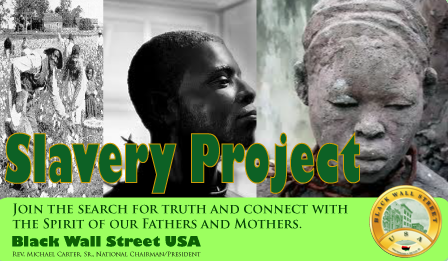
Alabama
Alaska
Arizona
Arkansas
California
Colorado
Connecticut
Delaware
Florida
Georgia
Hawaii
Idaho
Illinois
Indiana
Iowa
Kansas
Kentucky
Louisiana
Maine
Maryland
Massachusetts
Michigan
Minnesota
Mississippi
Missouri
Montana
Nebraska
Nevada
New Hampshire
New Jersey
New Mexico
New York
North Carolina
North Dakota
Ohio
Oklahoma
Oregon
Pennsylvania
Rhode Island
South Carolina
South Dakota
Tennessee
Texas
Utah
Vermont
Virginia
Washington
West Virginia
Wisconsin
Wyoming
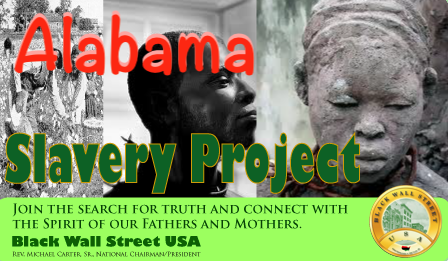
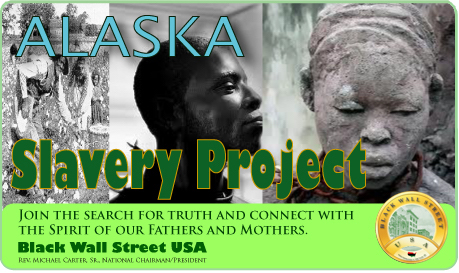



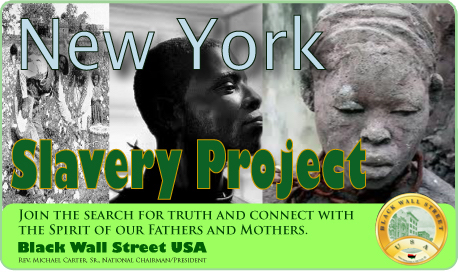

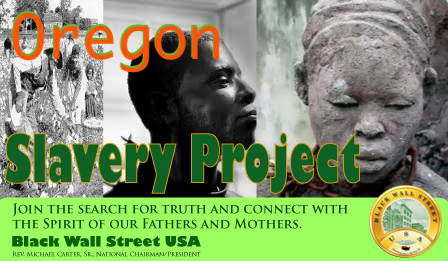
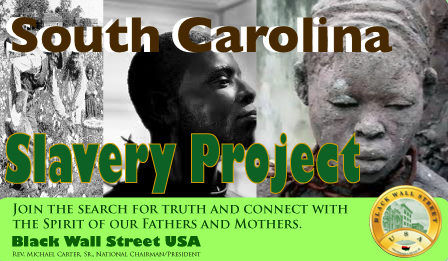
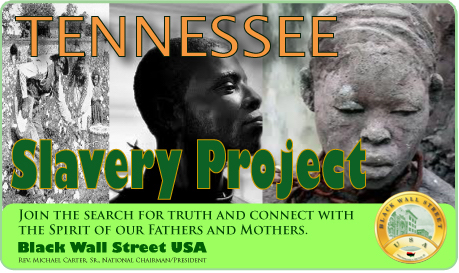
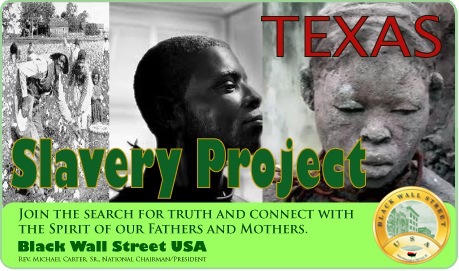



BlackWallStreet.org

Slave Records By State
See: Slave Records By State
Freedmen's Bureau Records
See: Freedmen's Bureau Online
American Slavery Records
See: American Slavery Records
American Slavery: Slave Narratives
See: Slave Narratives
American Slavery: Slave Owners
See: Slave Owners
American Slavery: Slave Records By County
See: Slave Records By County
American Slavery: Underground Railroad
See: American Slavery: Underground Railroad


